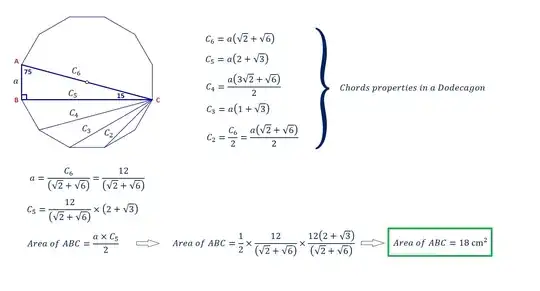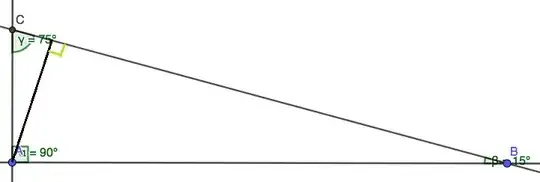So there is a right triangle $ABC$ with $m∠C=90°$, $m∠B=75°$, and $BC\ (the \ hypotenuse)=12 cm$. I want to find the area of this triangle
It would look something like this:

Note: I have already solved this problem and got the answer as $18$ $cm^2$. So, I am not looking for an answer, I am looking for another way to solve this problem.
I have looked at other stack exchange questions similar to this question that involves $15-75-90$ triangles:
Ex. https://math.stackexchange.com/a/2082666/521593
All of these questions were solved using trigonometric functions however, I think there is a way to solve this using elementary geometry without trigonometric functions. I tried to go somewhere with splitting $∠B$ into $30-60-90$ triangles or a $15-15-150$ triangle but to no avail as it did not help me at all.
If anyone could help, find this way it would be most appreciated. Thanks.


